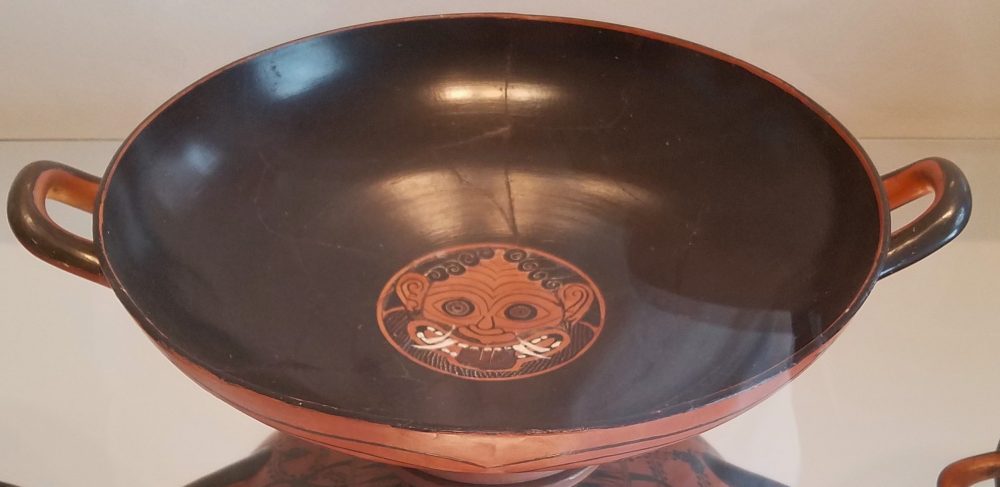 Artist: Harootian was born in Armenia. Due to the mass genocide by the ruling Turks his family moved to Russia initially but ended up immigrating to the United States. This gave Harootian the opportunity to gain an education where he studied painting and developed the early skill of watercolor painting. After finishing his schooling, he moved to Jamaica where he befriend Edna Manley who greatly influenced his work leading to his love of carving. His sculptures ranges “being made from” wood, bronze, and stone carvings.
Artist: Harootian was born in Armenia. Due to the mass genocide by the ruling Turks his family moved to Russia initially but ended up immigrating to the United States. This gave Harootian the opportunity to gain an education where he studied painting and developed the early skill of watercolor painting. After finishing his schooling, he moved to Jamaica where he befriend Edna Manley who greatly influenced his work leading to his love of carving. His sculptures ranges “being made from” wood, bronze, and stone carvings.
Date: Created in 1948
Location on Campus: Bass Concert Hall, 6th floor
Acquisition: Prometheus and Vulture, in addition to 27 other sculptures, was loaned to UT in 2009 from the Metropolitan Museum of Art. All 28 sculptures were introduced to UT to expose the students, and other visitors, to major art trends during the last half of the 20th century.
Description: The Prometheus and Vulture sculpture is made of marble. The dimensions are 62.5 × 33.75 × 15.5 inches. Rather than Harootian being influenced by Jamaican art, he kept his own style and perspective when creating his sculptures. In fact, his creations impacted Jamaican culture. With the help of Manely, they were able to twist the traditional artwork in Jamaica into a beautiful, alternative new genre.
In Apollodorus’ account of Prometheus and humanity, Prometheus is seen as the creator of mankind by forming them straight from the earth and water. In Aeschylus’ play, Prometheus Bound, Prometheus granted humans every skill from navigation to medicine. But the greatest gift he gave them that coined him as “humanity’ benefactor” was fire! Prometheus is seen as the giver of science and civilization. In both accounts Prometheus is the god of foresight. Although he knew his disobedience would result in punishment, he knew he would eventually be freed (eventually he was freed by Herakles). This beautiful sculpture crafted by Harootian does have the symbolic meaning of the traditional myth that Prometheus is the god of foresight, and after being tormented for eternity he would be eventually freed. However, Harootian gave the sculpture the underlying symbolism of fear and conflict, serving a metaphor for WWII. Harootian wanted to express in this sculpture that, like Prometheus, the ones who suffered after the war believed their suffering was a crucial step in the advancement of mankind and they knew they would be released from the oppression and torment. In the sculpture itself you can see Prometheus chained and laying back in agony. However, rather than following the myth of Apollodorus and Aeschylus, the bird in the sculpture is a vulture rather than an eagle. In this sculpture the vulture is mounted on Prometheus’ knee as if prepared to eat out his liver. I believe that this sculpture is also meant to express the element of sacrifice in mankind. Prometheus sacrifices a large part of his life just for the advancement of humans. Its human nature to sacrifice yourself rather than have others in misery. Parents would sacrifice everything for the well being of their kids, in this case Prometheus is the parent and the children are all humans. Sacrifice is meant to benefit for the greater good. Prometheus knows he would be suffering for an unknown amount of time, but he sees it’s worth it for the advancement of his creations.
Bibliography:
“APOLLODORUS, THE LIBRARY 1.” APOLLODORUS, THE LIBRARY BOOK 1 – Theoi Classical Texts Library. Accessed April 26, 2019. https://www.theoi.com/Text/Apollodorus1.html.
Chen, T. S., and P. S. Chen. “The Myth of Prometheus and the Liver.” Journal of the Royal Society of Medicine. December 1994. Accessed April 25, 2019. https://www.ncbi.nlm.nih.gov/pmc/articles/PMC1294986/?page=1.
“Khoren Der Harootian.” Khoren Der Harootian RSS. Accessed April 25, 2019. http://www.derharootian.com/.
“PROMETHEUS.” PROMETHEUS – Greek Titan God of Forethought, Creator of Mankind. Accessed April 22, 2019. https://www.theoi.com/Titan/TitanPrometheus.html.
“Prometheus and Vulture.” LANDMARKS. August 01, 2018. Accessed April 25, 2019. https://landmarks.utexas.edu/artwork/prometheus-and-vulture.
Aeschylus. “Prometheus Bound.” In Anthology of Classical Myth. 2nd ed.
Written by Julia Ouchie

